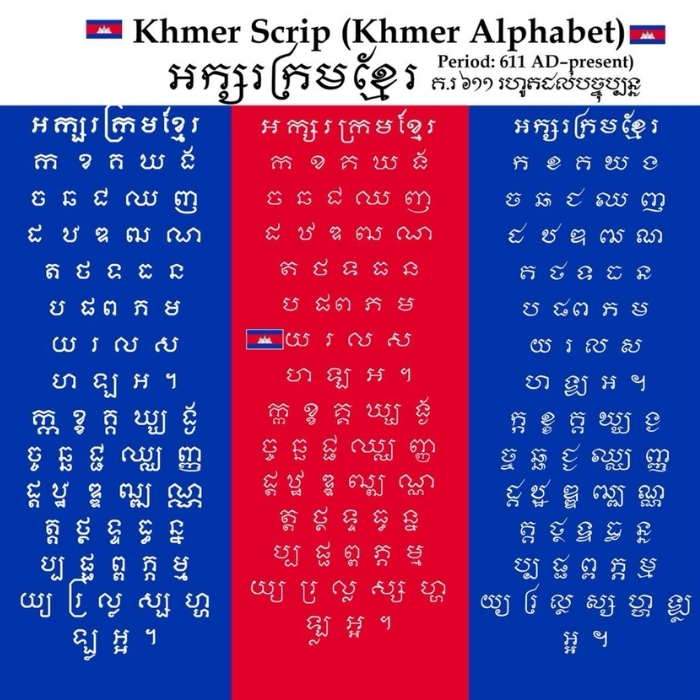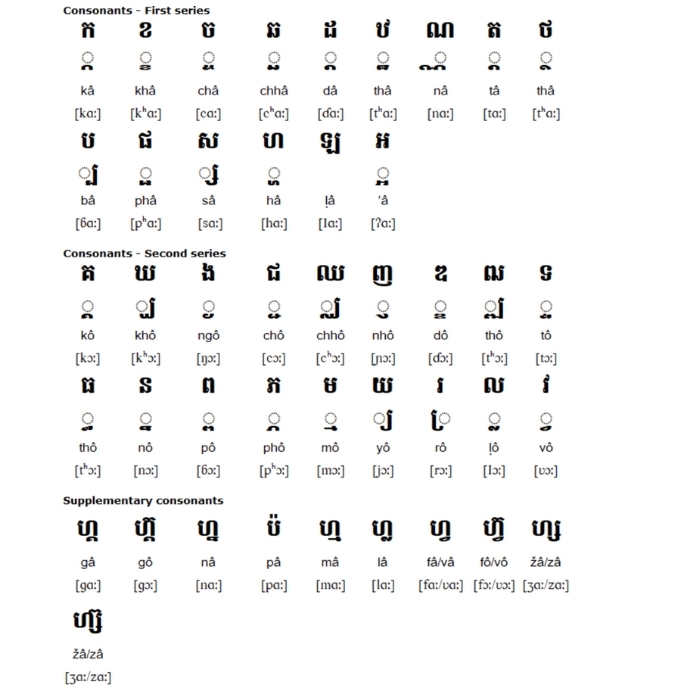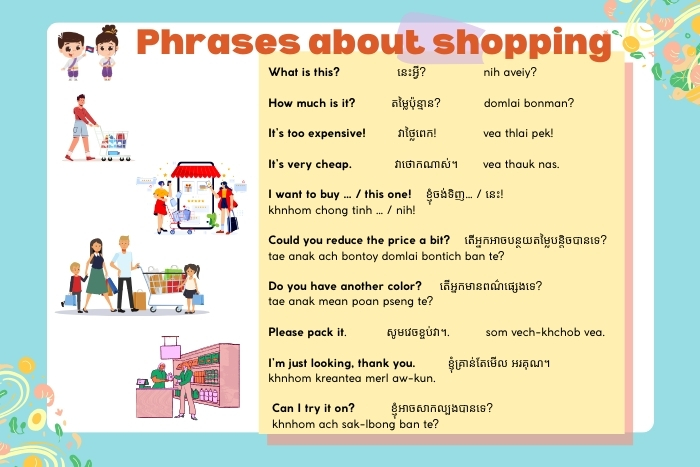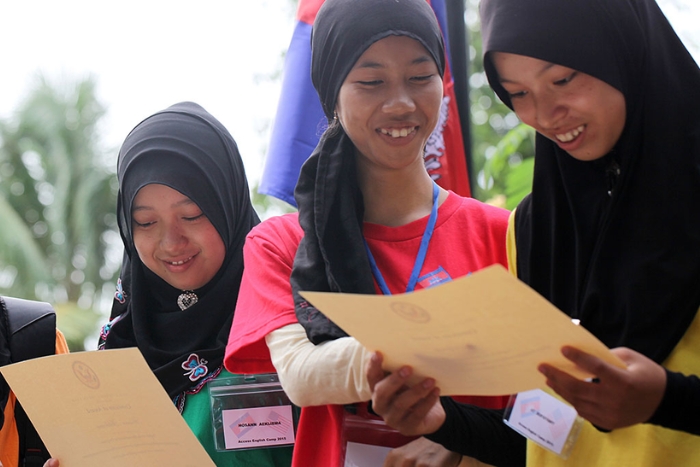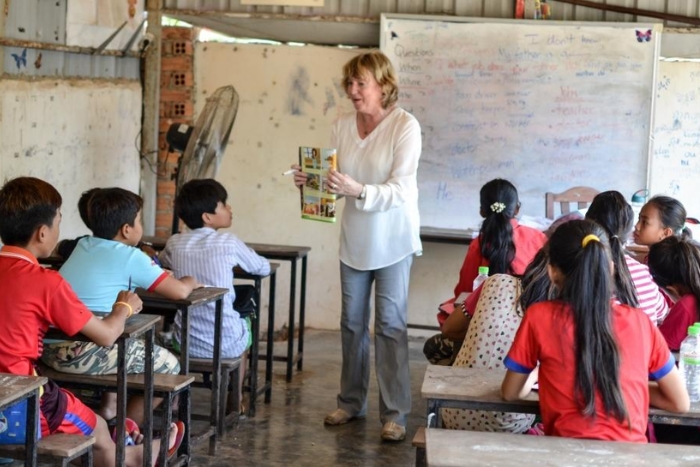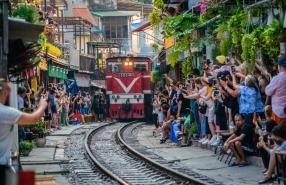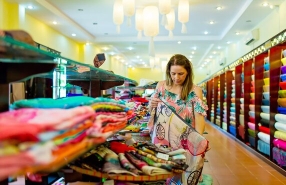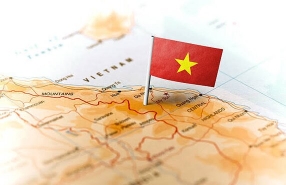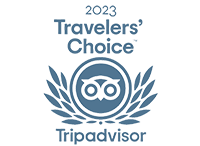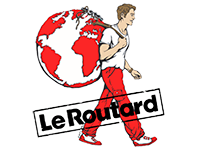For many travelers, one of the first questions before visiting a new country is about its language. What language is spoken in Cambodia? This question sparks curiosity about communication, identity, and culture. The Cambodia language reflects centuries of tradition, religion, and regional influence, making it a fascinating subject to explore. Learning about the language of Cambodia reveals how people greet one another, trade in local markets, and pass down stories from generation to generation. Whether you’re preparing for a journey or simply intrigued by Southeast Asia, understanding the linguistic landscape will deepen your appreciation of the country. By engaging with the Cambodia language, travelers build authentic connections and gain a richer travel experience.
I. What is the official language in Cambodia?
1. What is Cambodia's main language?
What language is spoken in Cambodia? The official language of Cambodia is Khmer (sometimes called Cambodian). It belongs to the Austro-Asiatic language family, making it linguistically related to Vietnamese and Mon, although it has developed its own unique script, grammar, and vocabulary over centuries.
Khmer is spoken by around 97% of the country’s population, making it the most widely used language across all aspects of daily life. It is the Cambodia language of government, education, media, and business. If you see road signs, newspapers, or official documents in Cambodia, they will almost always be written in Khmer.
The Cambodia language has 33 primary consonant letters (now about 31 in common use). Each consonant can appear in two series (A and O), which affects the sound of the vowel attached to it. Consonants are written with distinctive Khmer script symbols, for example ក (k), ខ (kh), ង (ng), ច (ch), and ដ (d). There are also subscript consonants written beneath main letters to form clusters.
Khmer - language of Cambodia has around 24 written vowel symbols, which combine with consonants to create more than 30 vowel sounds (including short, long, and diphthongs). Vowel symbols can be placed before, after, above, or below consonants. For example, ា (aa), ិ (i), ុ (u), and ោ (o) are common vowel marks. Together, these consonants and vowels form the rich and complex Khmer writing system.
The Khmer script is especially interesting for visitors. Unlike neighboring Vietnam, which uses the Latin alphabet, Khmer language writing is based on an ancient Indian script called Brahmi. Its rounded shapes and many characters can look complex at first, but they represent a long history of cultural exchange between Cambodia, India, and Southeast Asia.
Which language is spoken in Cambodia? In terms of usage, Khmer is also the language of instruction in schools and universities. This ensures that future generations continue to learn and preserve their national language, even as foreign languages gain popularity.
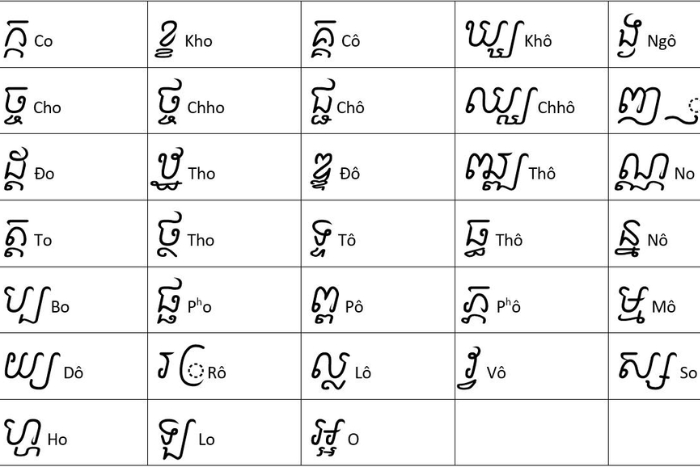
Travel to Cambodia, for travelers, learning a few simple Khmer words or sentences can make your trip much more enjoyable. Cambodians are known for their hospitality, and they greatly appreciate foreigners who try to speak their language, even just a little.
2. How to say some simple sentences in Cambodia language?
When visiting Cambodia, learning a few basic phrases in the local language can make your trip friendlier and more memorable. Even simple words show respect for Cambodian culture and help you connect with locals. Below are some easy Cambodia Language (Khmer) sentences you can try:
| English | Khmer Scrip | Khmer Alphabet |
Hello
| សួស្តី! | suos-dei! |
How are you?
| តើអ្នកសុខសប្បាយទេ? | tae anak sok-sabbay te? |
I’m fine, thank you
| ខ្ញុំសុខសប្បាយ អរគុណ។ | khnhom sok-sabbay aw-kun. |
What is your name?
| តើអ្នកឈ្មោះអ្វី? | tae anak chhmua aveiy? |
My name is [Your Name]
| ខ្ញុំឈ្មោះ [Your Name]។ | khnhom chhmua [Your Name]. |
I don’t understand.
| ខ្ញុំមិនយល់ទេ។ | khnhom min yol te. |
Can you help me?
| តើអ្នកអាចជួយខ្ញុំបានទេ? | tae anak ach chuoy khnhom ban te? |
How much is this?
| តម្លៃប៉ុន្មាន? | domlai bonman? |
Goodbye
| លាហើយ! | lee-haey! |
Yes / No
| បាទ - ចាស / ទេ | baat - chaas / te |
You can also pick up a few short, easy-to-remember phrases to enrich your trip to Cambodia. Learning Cambodia language, these expressions helps you communicate more naturally with locals and adds depth to your travel experience.
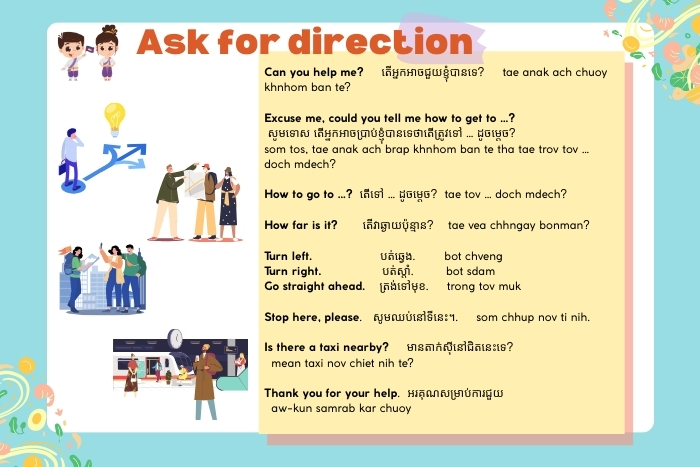
II. Other Cambodia’s language of minority
What language is spoken in Cambodia? Although Khmer language dominates daily life, Cambodia is home to several minority groups, each with their own language. These minority Cambodia languages are an important part of Cambodia’s cultural fabric, especially in rural and indigenous communities.
1. Cham
Cham is the largest minority group with its own strong linguistic identity. Their language, part of the Austronesian family, connects them to communities in Malaysia and Indonesia rather than to Khmer. Cham villages are concentrated in Kampong Cham and Kampot, where the language thrives in daily interaction. Religious life strengthens its role: Arabic script is used for Islamic teachings and ceremonies. Younger speakers, however, often code-switch between Cham and Khmer, reflecting both integration into national life and the preservation of ethnic roots.
2. Vietnamese
Vietnamese is spoken mainly in Phnom Penh, Kandal, and along the Mekong basin. It has spread through centuries of migration, with many families rooted in Cambodia for generations. Although used actively in households and markets, it rarely appears in schools or government offices. This Cambodia language is closely tied to fishing, small-scale trade, and cross-border commerce. Its presence is sometimes sensitive due to political history, yet in practice it remains a daily means of expression, binding Vietnamese-Cambodian communities together while maintaining links to their homeland.
3. Chinese dialects
What language is spoken in Cambodia? The Chinese community has historically been crucial to Cambodia’s business networks, and language is central to this influence. Families pass down dialects such as Teochew, Cantonese, and Hokkien, often heard in family-run shops and traditional associations. In contrast, Mandarin represents a newer trend. With China’s investment rising, Mandarin is now taught in private schools and increasingly valued in professional settings. This creates a layered linguistic landscape: heritage dialects function in family and cultural life, while Mandarin positions younger Chinese-Cambodians for opportunities in modern commerce.
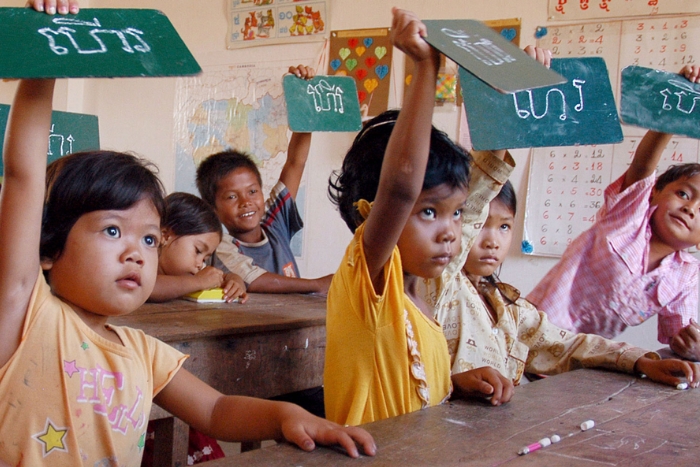
4. Kuy
Kuy is an indigenous Cambodia language used in northern provinces like Preah Vihear and Stung Treng. Traditionally, Kuy speakers were forest dwellers and elephant keepers, so their language carries ecological vocabulary and ritual expressions tied to the natural world. In remote villages, Kuy is still spoken among elders, but schooling in Khmer encourages bilingualism. The intergenerational gap grows wider each year, with some children only passively understanding Kuy. Despite these challenges, community pride keeps the language alive in festivals, oral stories, and ancestral ceremonies.
5. Jarai
Jarai belongs to the Austronesian family and is found mainly in Ratanakiri Province. Unlike smaller groups, Jarai maintains a relatively strong base of speakers, especially in highland villages where traditional lifestyles remain intact. This Cambodia language is used in family life, rituals, and even local governance. However, contact with Khmer-speaking institutions slowly changes patterns of communication. Many young Jarai speak both languages with ease, switching depending on context. This bilingualism ensures integration but also raises concerns that Khmer may eventually overshadow Jarai in daily use.
6. Chong
Chong is among Cambodia’s most endangered minority languages, spoken near the Thai border by a shrinking population. It once flourished in isolated villages but now survives only in limited contexts, often with elders. Younger generations have shifted toward Khmer or Thai, making Chong transmission increasingly rare. Scholars and cultural activists attempt to preserve this Cambodia language by recording oral traditions and documenting vocabulary. Still, without institutional support, its future is fragile. Today, Chong stands as a symbol of cultural resilience yet also of linguistic vulnerability.
7. Tampuan
What language is spoken in Cambodia? Tampuan is spoken in Ratanakiri, where indigenous groups live close to their ancestral lands. The language is still used actively at home and in village life, particularly in farming practices and spiritual ceremonies. However, schools operate almost entirely in Khmer, so many children grow up with Tampuan as a first language but switch quickly in formal education. This creates a balance: Tampuan remains vibrant in cultural and domestic spheres, while Khmer language dominates public life. The coexistence illustrates both resilience and the pressures of assimilation.
III. Foreign language spoken in Cambodia
Cambodia’s long history of colonization, trade, and globalization has also brought foreign languages into everyday life. While Khmer language remains central, foreign languages such as French and English play an important role, especially in business, diplomacy, and tourism.
1. French
Although Cambodia has one of the smallest French-speaking communities in Asia, the language holds a special historical and cultural role. Cambodia was part of French Indochina from 1863 to 1953, during which time French was the official language of administration, law, and education. Many older Cambodians, especially in urban areas, still speak French fluently.
Today, French in Cambodia continues to be used in diplomacy and is supported by organizations such as the French Institute of Cambodia. Schools and universities in Phnom Penh offer French-language programs, and Cambodia is a member of the International Organisation of La Francophonie. Interestingly, Cambodia is experiencing a stronger revival of French compared to neighboring Vietnam or Laos.
For travelers, you may notice French influence in Cambodian cuisine, architecture, and even loanwords in Khmer vocabulary. However, English has now become more widespread in daily use.
2. English
In the last few decades, English in Cambodia has become the most important foreign language in Cambodia. It is now the primary foreign language taught in schools and widely used in tourism, business, and international organizations.
Younger generations in Cambodia, especially in cities like Phnom Penh and Siem Reap, are increasingly fluent in English. Teaching english in cambodia, from hotels, restaurants, and travel agencies often have staff who can communicate in English, making it easier for visitors to navigate the country. The rise of English is also tied to Cambodia’s growing economy and global integration. Many Cambodians learn English to access better job opportunities, especially in tourism and international trade.
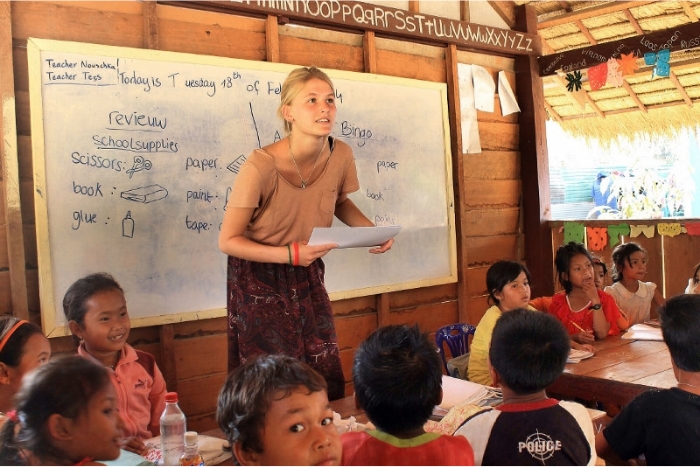
The Cambodia language is a fascinating reflection of the country’s identity and history. At its heart is Khmer, the official and most widely spoken language, connecting nearly all Cambodians through education, government, and culture. Alongside Khmer language, a variety of minority languages of Cambodia, from Cham and Vietnamese to Kuy and Tampuan, add depth to the nation’s diversity. Meanwhile, French and English illustrate Cambodia’s connections to the wider world, from its colonial past to its global future.
What language is spoken in Cambodia? For visitors, learning a few Khmer phrases can enrich your experience and show respect for local culture. At the same time, knowing that English is widely spoken will give you confidence when traveling around. Ultimately, the story of Cambodia language is one of resilience, diversity, and adaptation. Discover about official language of Cambodia, it is a story where tradition and modernity meet, offering travelers not only practical insights but also a deeper appreciation of Cambodia’s cultural richness.
How can I plan a 4-week luxury trip across Vietnam Thailand Laos Cambodia?
A 4-week luxury Vietnam Thailand Laos Cambodia usually divides into about one week per country, allowing you to explore major cities, cultural sites, and scenic areas. AUTOUR ASIA can customize private guides, luxury hotels, and seamless transfers, which makes moving between countries stress-free. Private flights or first-class trains are also options for convenience.
Punuarii le Prado
5.0
Excellent
What’s a good itinerary for 15 days in Cambodia?
A typical Cambodia 15-day trip might start in Siem Reap (Angkor temples), then head to Battambang for countryside tours, Phnom Penh for history and culture, and finally to Sihanoukville or Koh Rong for beaches. Travel to Cambodia 15 days, this balance lets you see temples, cities, and coastlines without rushing. Contact with Autour Asia for the best price!
-> Cambodia adventure tours 14 days
-> Cambodia package tours
Is Cambodia safe for tourists?
Is it safe to travel to Cambodia right now? Cambodia is generally safe for tourists, especially in main destinations like Siem Reap and Phnom Penh. Normal precautions such as safeguarding valuables, using licensed transport, and avoiding isolated areas at night are recommended.

